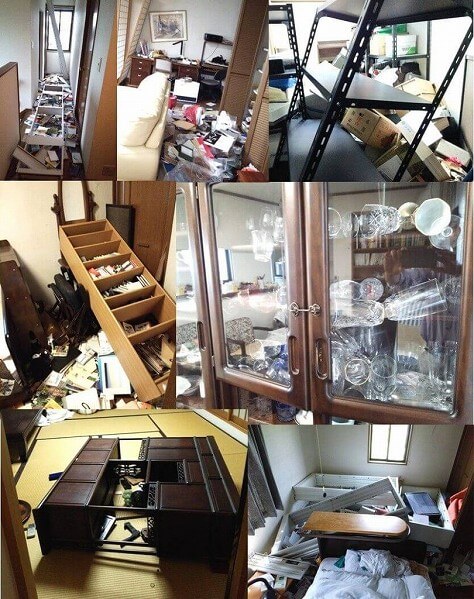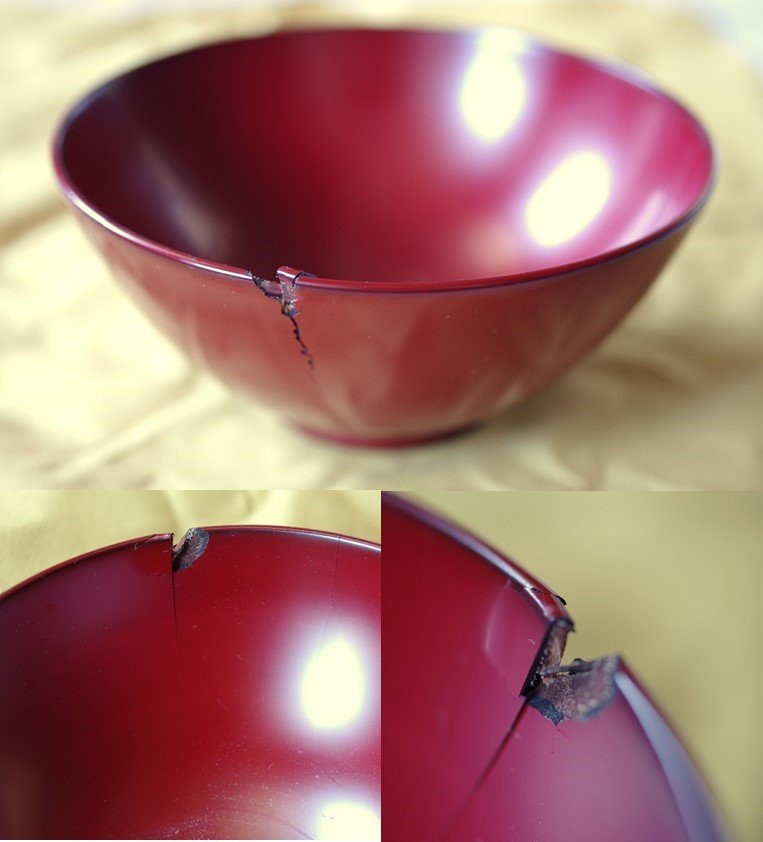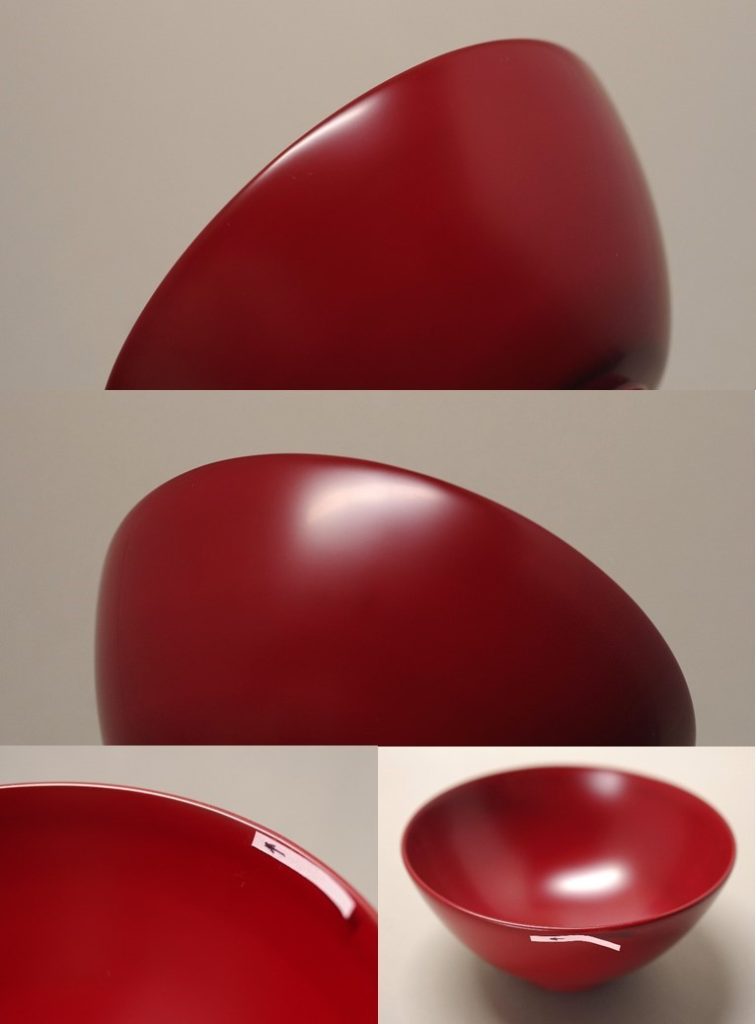
On January 26 and 27, 2018, I was at one of the most energetic and modern lacquerwork exhibition held at WAKO department store in Ginza,Tokyo
The exhibition was titled “The Present of Lacquer Art (漆芸の現在形)” and featured five latest urushi lacquer artists in Japan.
The featured artists are;
Mr. Kodo Aoki (青木 宏憧) born 1976
Mr. Shinsuke Aoki (青木 伸介) born 1977
Mr. Yoshino Takamasa (吉野 貴将) born 1976
Mr. Shinpei Matsuzaki (松崎 森平) born 1981
Mr. Ken Hiwatashi (樋渡 賢) born 1977
Their exhibition at WAKO was very exciting and successful with many guests coming. The art areas of these five artists work are very much different. The only commonality is that they love working with urushi lacquer and creative in using them. Please keep an eye on them, they will really fly in the coming future.
I’m afraid that I can not show you the atmosphere of the exhibition, since any photos were prohibited at WAKO.
WAKO’s site on this exhibition in Japanese ; https://www.wako.co.jp/exhibitions/572
Following photos are from above WAKO’s site page;
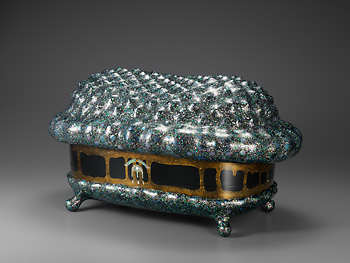
青木宏憧 (Kodo Aoki )
守箱 「氷雲」(39.5×60× H32㎝)
Shubako “Hyoun (Ice cloud)”
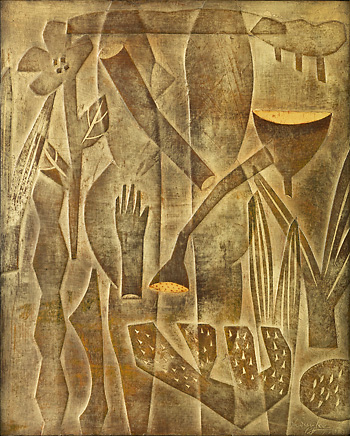
青木伸介 (Shinsuke Aoki)
「イザナ」(3号F)
“Izana”

吉野貴将 (Takamasa Yoshino)
脱活乾漆偶像「悠悠」(16×16×H23㎝)
Hollow dry lacquer statue “Yuu Yuu”

松崎森平 (Shinpei Matsuzaki)
「Forest」(37×52㎝)
“Forest”

樋渡 賢 (Ken Hiwatashi)
「菊螺鈿杯」(Dia6×H2.5㎝)
“Kiku Raden Hai (Mother of pearls Sakazuki of Chrysanthemum) “
Since there are no English translations available regarding this exhibition from the WAKO site, I have translated WAKO’s Introductory preface of the Exhibition as follows;
< Introductory preface of the “The Present of Lacquer Art” >
” In this exhibition, we are introducing young lacquer artists with brilliant achievements. At a time when the opportunities to use lacquerware in daily life is becoming less and less, it is really encouraging for the future of Japan to see the presence of these young artists in Japan who are working with Japanese urushi lacquer in their own creative way.
The works in this exhibition are made of the same materials such as lacquer, gold dust, and shells, but they have various shapes. The techniques employed are in wide varieties, such as wood joinery, wood carving using a lathe and dry lacquer modeling, as well as decorative techniques such as maki-e, raden, metal attaching, unconventional lacquer painting, lacquer coating, every work is highly skilled specialized works of craftsmen.
The three artists, Kodo Aoki, Shinsuke Aoki, Takamasa Yoshino were classmates at the Tokyo University of the Arts, and they work hard together, learning from each other and they are teaching juniors at their alma mater. They attracted attention early on. Shinsuke Aoki’s work on his undergraduate, Kodo Aoki on his master’s course, Takamasa Yoshino in his doctor’s course, their final project works were purchased by the University’s museum. The success of the three men after that is well known to the public.
Shinpei Matsuzaki, who is a little younger graduate of the same Univertity of the above three, made full use of woodworking, lacquerware, dyeing and weaving, and metalworking techniques in his graduation project. It was highly acclaimed. Even today, his works, which make skillful use of mother of pearls, are highly regarded by many lacquer enthusiasts.
Ken Hiwatashi, born in a lacquerware manufacturing family, learned to make maki-e lacquerware at the Ishikawa Prefectural Wajima Institute of Lacquerware Art and Design and is now a master lacquerware craftsman. He is one of the most outstanding artists of his generation in terms of the works he has created.
The world created by the combination of these five artists’ works will be a world of new Japanese beauty through lacquer. We are looking forward to the next generation to share it with the rest of the world.”
– WAKO site translation by Kogei Styling –.
The Exhibition was held: Jan.26, 2018 (Fri) ~ Feb. 4, 2018 (Sun)

